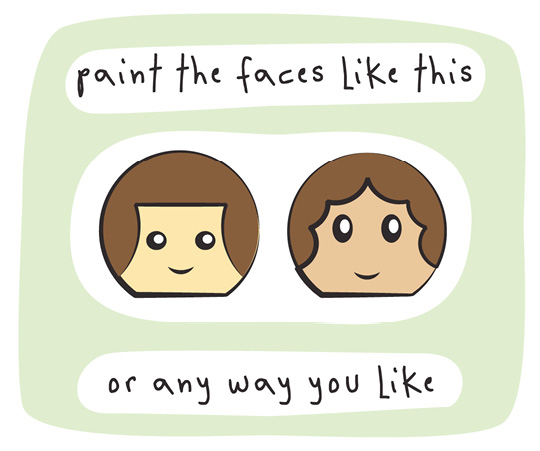

These adorable little figures remind me of those old-school plastic toys I had as a kid. While these are not for wee ones likely to put things in their mouths, this is a fun project for older kids to do on a rainy afternoon. And, it’s another project where you can use those synthetic corks!
* E6000 glue
* 1" wooden doll heads from a craft store
* Corks (synthetic will work)
* Paintbrush
* White nontoxic primer paint
* Acrylic nontoxic craft paint, assorted colors
* Fine-tip paint pens in black
* Optional: Clear acrylic nontoxic sealer, brush-on or spray

You can craft these figurines to look like people you know! Just make simple choices based on the subjects. For taller people, use taller corks. Trim corks to make “kids.” Paint hair and skin tone to match your subjects, and add little details to their clothes that really reflect the people you are trying to capture in a cork likeness. You could make a set of your whole family, or a couple as a wedding-cake topper!
The major thing separating red wine from white wine is the presence of the grape skins in the fermentation tank. Red skins add red color to otherwise clear grape juice. It is possible, then, to make white wine from red grapes, although most white wines you buy are made from white grapes. Most white wines come from “white” grapes, which are actually greenish, greenish yellow, golden yellow, or pinkish yellow. Regardless of the actual color of the skins, the juice for white wine is fermented without the skins and seeds. The result is no tannin and little color. White wines can take on a pale straw color or greenish to deep gold tones, depending on the grape variety and aging treatment.